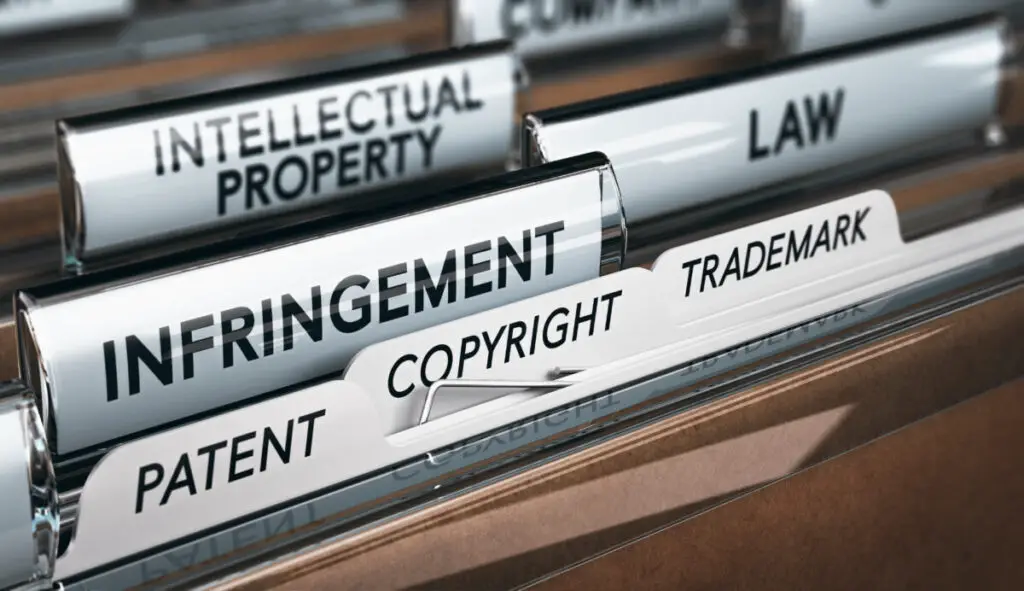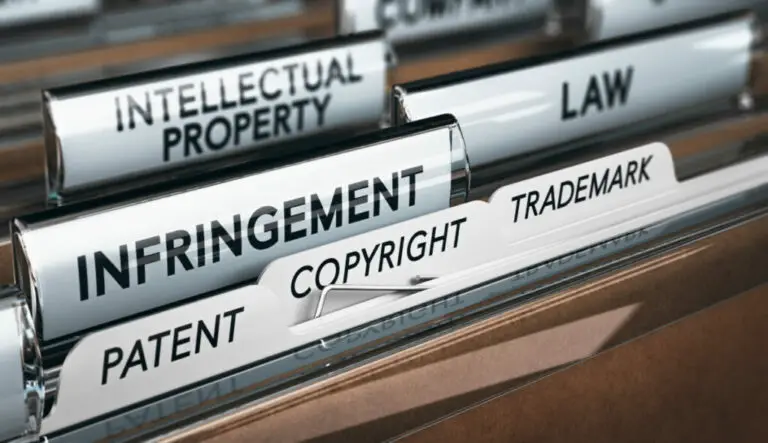How to Enforce a Trademark
If you have recently registered a trademark or if you wonder if you might have a case of infringement, it’s important to know what actions you can take to protect your mark.
If someone uses a registered trademark without consent, the trademark owner should send a “cease and desist” letter to the infringer. If the letter is not met with cooperation, legal action may be taken in the form of a lawsuit. If registered under the USPTO, the owner may file in a federal court.
Infringement doesn’t often go beyond the “cease and desist” letter, but it’s important to know what options are available to you and what rights you have as a trademark owner.
Writing a “Cease and Desist” Letter
When you become aware that a company, individual, or other entity is using your trademarked logo without permission, the first step is to send a “cease and desist” letter. At this point, you may hire a lawyer to help you draft the letter and ensure that all of the information is covered.
You don’t need a lawyer to write a “cease and desist” letter, but having one will add credibility to your claim. In this letter, the trademark owner should entreat the infringer to stop using the mark without permission. Names of both recipient and sender should be in the letter as well as addresses and companies in connection with both parties. In addition to this a “cease and desist” letter can contain the following:
- Specifics about the use of the trademark
- Date of first use
- Why you believe it’s infringement
- Effects of the infringement
- A proposal to settle things without legal action
- Potential Legal Actions that could be taken against the company or individual
- Request for a response
In your letter, it is important to be as specific as you can be. The more information you can provide, the more credible your claim will be. While plenty of information is good, make sure the information you do have to offer is relevant and correct.
Trademark Misuse
One aspect you can include in your letter is a section detailing the misuse of the trademark. This can include the date of the first appearance of your trademark without permission. Talk about why you believe it is an infringement and prove that they never had permission to use the mark. If they have been using an exact copy of your trademark, you will have a lot of credibility in this regard. However, if they are using an image or phrase that merely resembles your trademark, there might be some ambiguity that you will need to clarify as well as you can.
Settle Without Legal Action
If you wish to settle things without legal action, it is best to outline the desired action in the “cease and desist” letter. The first thing you should do is ask the infringer to stop their unauthorized use of your trademarked image or phrase. You may ask to negotiate terms of stopping the use of the trademark. The following are points of negotiation you may wish to propose:
- A date by which all misuse should cease
- A public or private acknowledgement of inappropriate use of a trademark
- Compensation for lost profits regarding the use of the trademark
Proposing a date by which all use must cease doesn’t necessarily guarantee that the infringer will stop the misuse by that date, but it does give you a piece to negotiate.
A public acknowledgment may be something as simple as a notice posted in their business or on the business website explaining that the former use of the trademark was not approved. A private notice may look like the infringer contacting the buyers of any product that had the infringed trademark on it to explain that the trademark isn’t under their ownership.
You may demand compensation for lost profit due to misuse of the trademark. If you decide to take this action, be advised that until it is court ordered, they are not legally required to compensate you for any misuse of the trademark. While the infringer won’t be legally obligated to compensate you for any misuse, the cost of trademark infringement lawsuits can be pricey, so they may comply without legal due.
Statement of Potential Legal Action
If the infringement is serious and harbors a lot of potential damage to your business, you may state that you will take legal action if the misuse does not cease. For many who have willfully infringed a trademarked image or phrase, this will be enough to persuade them to comply. If they unknowingly committed the act, they may want more clarification and perhaps some negotiation to occur before action is taken.
Request for Response
When sending a letter of this sort, it is a good idea to close with a request for a response. You may ask for a response by a certain date or ask for an immediate response upon receiving the letter.
Example
The list above isn’t inclusive and there may be circumstance-specific things that will necessitate other items to be included. You should assess your situation carefully, so you know what should go in your letter. The most important thing is to be clear and specific. Your letter may be their first encounter with the fact that they are inappropriately using your image or phrase, so be sure to maintain a professional and understanding tone.
Drafting your own letter may be difficult if you’ve never drafted one before. You may use this template to help you get a start on your letter. Adapt to your own needs and circumstances to ensure the best possible results. (Source)
Filing a Lawsuit
Sending a letter doesn’t always fix the issue; sometimes, you will have to take further legal action. Before you take any further action, the first step is to acquire a good lawyer. A lawyer who is familiar with trademark issues will be able to support you and help you through the process of filing a lawsuit.
Make sure you have leverage before you sue for infringement. In most cases, a lawsuit regarding infringement must involve two parties similar in purpose. For example, a clothing brand can sue a t-shirt brand for using a similar mark, but a software company won’t have as much credibility suing an events center for use of a similar mark.
In order to begin the process of a lawsuit, you or your lawyer will draft a complaint. In the complaint, you will name the parties infringing and define what infringements were made against you. For the complaint, you may be able to easily take the information you provided in your “cease and desist” letter about the misuse of your trademark and format it into the complaint document.
The next step will be to serve a summons which is issued by the clerk of court to the infringer. The summons will contain all of the information regarding the lawsuit, including the court in which the infringer is sued, the case number, and a date by which the infringer needs to respond to the complaint. The summons is required to be delivered in person to the infringer or a representative of his business, so it can be assured that the defendant is aware of the case against him.
Once you have filed a case against an infringer, you become the plaintiff and the other party becomes the defendant.
Federal Lawsuit
If your trademark is registered with the USPTO, you may sue in a federal court. The case can be federal because the USPTO is a federal government agency, not a state-level agency.
State Lawsuit
Most frequently, trademark lawsuits will be held in a federal court. Even if the plaintiff files the lawsuit at the state level, the defendant can usually have the case moved to federal court.
If your mark isn’t registered with the USPTO, but it’s registered with your state, you will generally be guided to file your lawsuit at the state level. If you haven’t registered your trademark with the USPTO or the state, but you can assure that you were using the image, slogan, or phrases first, you may still be able to file a case against an infringer in a state court. Talk with your lawyer to discover the options available for you if you haven’t registered your trademark with the USPTO or your state.
Court Cases Outcomes
If the infringer is found guilty, there are a few courses of action that can be taken. The following are some orders the court may issue as a result of a guilty sentence:
- Misuse of the trademark be stopped by the infringer
- The infringer destroys or forfeits any property with the infringed trademark
- Monetary compensation and relief paid by the infringer to the owner of the trademark
- Profits
- Recompense for damages to trademark owner
- Costs of the action
- The defendant pays the plaintiff’s attorney fees
If the defendant is found to be not guilty, the court will not serve any of the orders above. The cost of the lawsuit will depend upon the outcome and what the court decides to rule, but typically a full acquittal will leave court costs with the plaintiff. (Source)
Dilution of Famous Marks
Typically, a lawsuit concerning the use of an image, design, or phrase without permission will be filed as infringement, but a plaintiff may instead file “dilution of famous marks” if he prefers. A “dilution of famous marks” lawsuit should be filed in the circumstance that the use of the mark will dilute the representation of the mark. If another company is using the same or similar mark and the use of the mark makes the mark common or generic, a “dilution of famous marks” lawsuit may be filed.
This differs from infringement because it has less structure and less credibility. The “dilution of famous marks” can be filed in the event that the goods or services from the conflicting companies are not similar. For example, a hat company can file a dilution of famous marks against a software company for using a similar image with a similar color palette, but they couldn’t file for infringement as easily because the products differ so much.
The credibility aspect comes down to whether the mark is famous. If a lawsuit is filed for “dilution of famous marks,” the defendant can argue that the mark isn’t famous and that the use of it won’t affect the brand in a major way. This is a pretty common outcome, so be prepared to defend the fame of your mark.
Rights of Trademark Owners
As the owner of a trademark, first and foremost, you have the right to use your trademarked phrase or image without penalty. Anyone can put the TM symbol next to their work to protect it from misuse, but you may only use a ® if your trademark is registered through the USPTO. As a registered trademark owner, you may use the ® sign next to your work to ensure that people know you have the legal rights to it. Making sure others know that your mark is registered can help you avoid infringement in the first place.
You have the right to take legal action against those who use your mark on behalf of their business or in any marketing. Most often, knowing you have registered your mark will deter others from using your mark without permission, but sometimes you will need to take legal action to enforce it.
Rights of Infringer
Once someone has a complaint served against them for infringement, they have some options. Once they receive the complaint and the summons, they have the duty to respond with a formal “answer.” If the defendant doesn’t agree with the claims made in the complaint, they can “answer” to them with their own claims. The “answer” document can contain a defense to the claims made in the complaint. They may also file a counterclaim which will ensure their concerns are also brought up in the case.
The defendant may also request a more definitive statement. If the complaint served is vague or doesn’t feel grounded, the defendant may request another pleading. This must be requested before a pleasing response is written and delivered.
Any documents served from the defendant to the court must also be sent to the plaintiff. They must be served on time or the defendant may be judged and ordered by the court to perform tasks from the list of court case outcomes above.
With the help of an attorney, the defendant will need to respond to the complaint with an appropriate response, either an answer or a response as outlined in Rule 12. Some actions a defendant may take are:
- Challenge the trademark in question
- Deny the proof of infringement
- Defend the alleged infringement
- Negotiate a settlement
If the defendant decides to challenge the trademark, they may petition to cancel the plaintiff’s registration only if the trademark was registered within the last 30 days. This petition should be submitted to the TTAB (Trademark Trial and Appeal Board). (source)
When a defendant decides to defend against the infringement accusation, typically, the “affirmative defense” stance will be taken. This means that the defendant will not face criminal or civil liability for the acts taken. Meaning that whether the use of the marks by the defendant is proven, the defendant won’t be punished for using such marks. This can be accompanied by a counterclaim that questions the plaintiff’s trademark credibility. For more information on the actions an infringer can take after a lawsuit is filed, check out the USPTO website.



